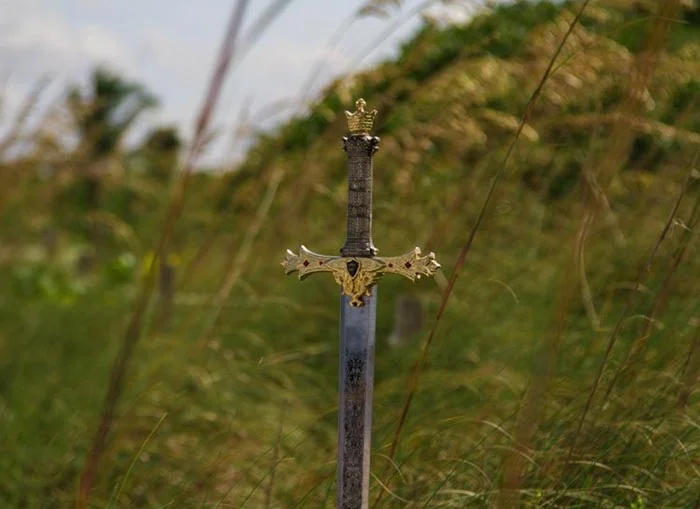Little Girls Keep Finding Ancient Swords in Lakes
Thanks to climate change, what lies beneath is coming to the surface.
By Jessie Schiewe
Photo: Ricardo Cruz
Near the end of 2017, the pulse rates of Arthurian fans quickened when they heard the news that a 7-year-old girl had found a rusted sword at the bottom of a Cornish lake.
Matilda Jones had been paddling waist-deep in Dozmary Pool when she saw a glint in the water. She dived under and pulled out a 4-foot tall blade. Though her father Paul noted to the Yorkshire Post that the sword didn’t look “particularly old,” there were those who thought otherwise. In fact, many believed it was King Arthur’s magical sword, Excalibur.
According to some legends, after being fatally wounded in the Battle of Camlann, Arthur ordered Excalibur to be thrown back into the nearest body of water, which, according to legend, was Dozmary Pool. Sir Bedivere flings it into the water, where it is caught by an arm, ostensibly belonging to Morgan le Fay, a.k.a. The Lady of the Lake. It was she who originally gave Arthur the sword, and, according to myth, he returned it so that she could gift it to another worthy individual after his death.
So could that worthy individual be Matilda? Since she was the person who found the sword, might she become England’s next great hero? It seemed likely at first (if you believe in that kind of thing), but then the illusion was shattered when a man named Mark Wilkins came forward claiming to have dropped the sword — which is technically only a prop blade — into the lake in the 1980s.
Now 49, Wilkins says he put it in the water as an offering to the Celtic gods.
“Back in the ’80s, I was very into spiritualism and followed the Celtic religion,” Wilkins told the Plymouth Herald. “It’s well-known in Celtic belief that if you want to honor the gods, you can make a sacrifice.”
Wilkins — who currently practices a Japanese form of spear fighting called sōjutsu — got the sword because he used to partake in battle reenactments. He purchased it through the mail from Battle Orders UK and was often seen carrying it during holidays and historical events, like Heritage Day and the Prayer Book Rebellion.
"The funniest thing is that I have people who can vouch I had the sword back then,” Wilkins said. “I had a phase when I would have a few drinks and go around knighting the people of Bodmin when I lived there."
We can’t say for sure, but it’s very likely that sword is now on-display somewhere in Matilda’s family’s house — a fun wall decoration with an equally amusing storyline to amuse guests with. And if that’s the case, then maybe it’s best that the sword wasn’t real because then the Jones’ would have had to relinquish it to a museum. Because that’s what happened this summer when an 8-year-old girl in Sweden found, yet another, sword in a lake.
Saga Vanecek had been searching for rocks to skim when her hands struck something long and hard in the sand and clay. It was a blunt and mottled sword, later identified by archaeologists as being 1,500 years old — predating the Viking age in Scandinavia.
Saga wasn’t allowed to tell anyone about the sword for a couple of months; not until a team of scientists had a chance to comb the lake for any other historical treasures. They ended up only finding a brooch from the same time period as the sword, and a coin from the 1700s.
The sword is now in a local museum, and Saga has since published an Op-ed about her experience in the Guardian. She also started a crowdfunding campaign to raise money to buy a replica of the sword that she can keep. She’s asking for $8,000 and in one week, has already managed to raise almost half the amount.
The most likely explanation behind all of these recent sword discoveries is global warming. Higher temperatures are lowering water levels and and many parts of the world are experiencing their warmest weather in centuries. In Saga’s article, she mentions her father told her Sweden was having its hottest summer in 260 years.
As a result, buried treasures — along with long-frozen diseases and viruses — are in some ways now easier than ever to uncover. In the last year alone, swimmers found a gold wedding ring, a movie prop tomahawk from the 1960s, and a World War II-era rocket in bodies of water across the U.S.
As permafrost soils continue melting, it’s likely we’ll start seeing more things rising to the surface — both good and bad — so keep an eye out.









People are treating their ailments with black salve, an Edwardian-era paste that is not only gross, but dangerous.